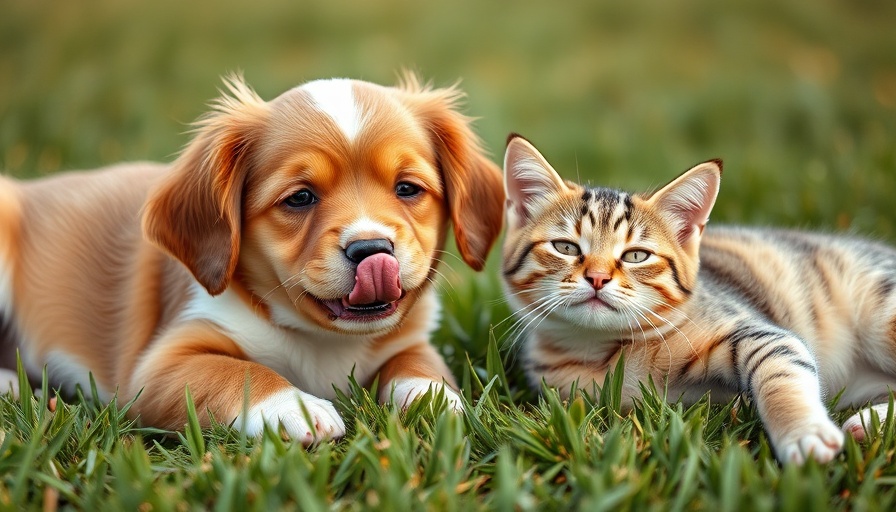
Understanding Pica: A Hidden Danger for Pets
Pica is more than just a quirky habit of your furry friends—it's a serious compulsive behavior that prompts pets to consume non-food items. Pet owners should be particularly alert to this condition, as it can lead to severe health complications. Whether your pet is chewing on socks, munching on rocks, or swiping at the trash can, understanding pica is crucial for maintaining their health and well-being.
The Signs and Symptoms of Pica
Recognizing the signs of pica can be the first step towards addressing it effectively. Common symptoms include vomiting, diarrhea, excessive drooling, and changes in behavior such as lethargy or hiding. If your pet shows these symptoms, it might be indicative of ingesting non-food items that can cause internal damage.
Items commonly ingested by pets suffering from pica include stones, dirt, paper, and even feces, a specific type of pica known as coprophagia. Much like a child exploring their environment, pets often taste items they're curious about, but when this escalates to regular ingestion, it’s time to seek professional help.
Why Does Pica Occur?
The origins of pica can be multifaceted, from behavioral issues like anxiety and boredom to underlying medical conditions. Nutritional deficiencies are perhaps the most common culprits, where pets might crave minerals or nutrients missing in their diets. In fact, Vets often recommend comprehensive blood tests to rule out conditions like anemia, diabetes, and other serious underlying health problems.
In many instances, particularly in dogs, pica may manifest from a lack of stimulation or chronic anxiety. Behavioral issues are exacerbated in pets who don’t receive adequate mental and physical exercise. Both articles from PetMD and AKC emphasize the importance of providing these pets with balanced diets and engaging activities to prevent such compulsive behaviors.
Treatment Options: What Can Pet Owners Do?
Here lies a silver lining: pica can be managed and treated! If your pet is diagnosed with pica, consulting a veterinarian or a specialized animal behaviorist can provide tailored strategies to combat the behavior. Treatment often begins with identifying any underlying medical issue. If resolved, sometimes the pica behavior resolves naturally. Otherwise, it can require a multi-faceted approach that involves behavioral modification.
Providing alternatives for chewing and redirecting your pet's focus can be immensely helpful. For instance, offering puzzle toys filled with treats can occupy their attention away from non-food items. Reinforcement training plays a critical role here as well; teach your dog to behave differently when they approach something dangerous.
Prevention is Key: Tips for Pet Owners
Preventing pica is often easier than treating it. A well-structured daily routine that includes regular exercise and interaction will keep your pets engaged and reduce feelings of anxiety or boredom. Ensure that your living space is free from accessible non-food items that may tempt your pet.
Implementing crate training as a safety measure during unattended hours can also be effective. This not only protects your valuables but also ensures the safety of your pet.
When to See a Vet
Should you suspect that your pet may be indulging in pica, consult your veterinarian immediately. Early intervention can save your pet from the dire health consequences associated with chronic pica. Monitoring your pet's behavior and keeping communication open with your vet ensures that you provide the healthiest life possible.
In summary, understanding pica and its implications can make a significant difference in your pet's health and happiness. Equip yourself with the knowledge and resources to handle this condition effectively. By fostering a nurturing environment and seeking professional guidance when necessary, you can safeguard your beloved companion against the perils of pica.
Take Action for Your Pet's Health
If you've noticed signs of pica in your pet, don’t hesitate! Connect with a qualified veterinarian who can create a comprehensive health plan tailored to your animal's needs. Awareness is your best ally in protecting your pet!
 Add Row
Add Row  Add
Add 


 Add Row
Add Row  Add
Add 

Write A Comment